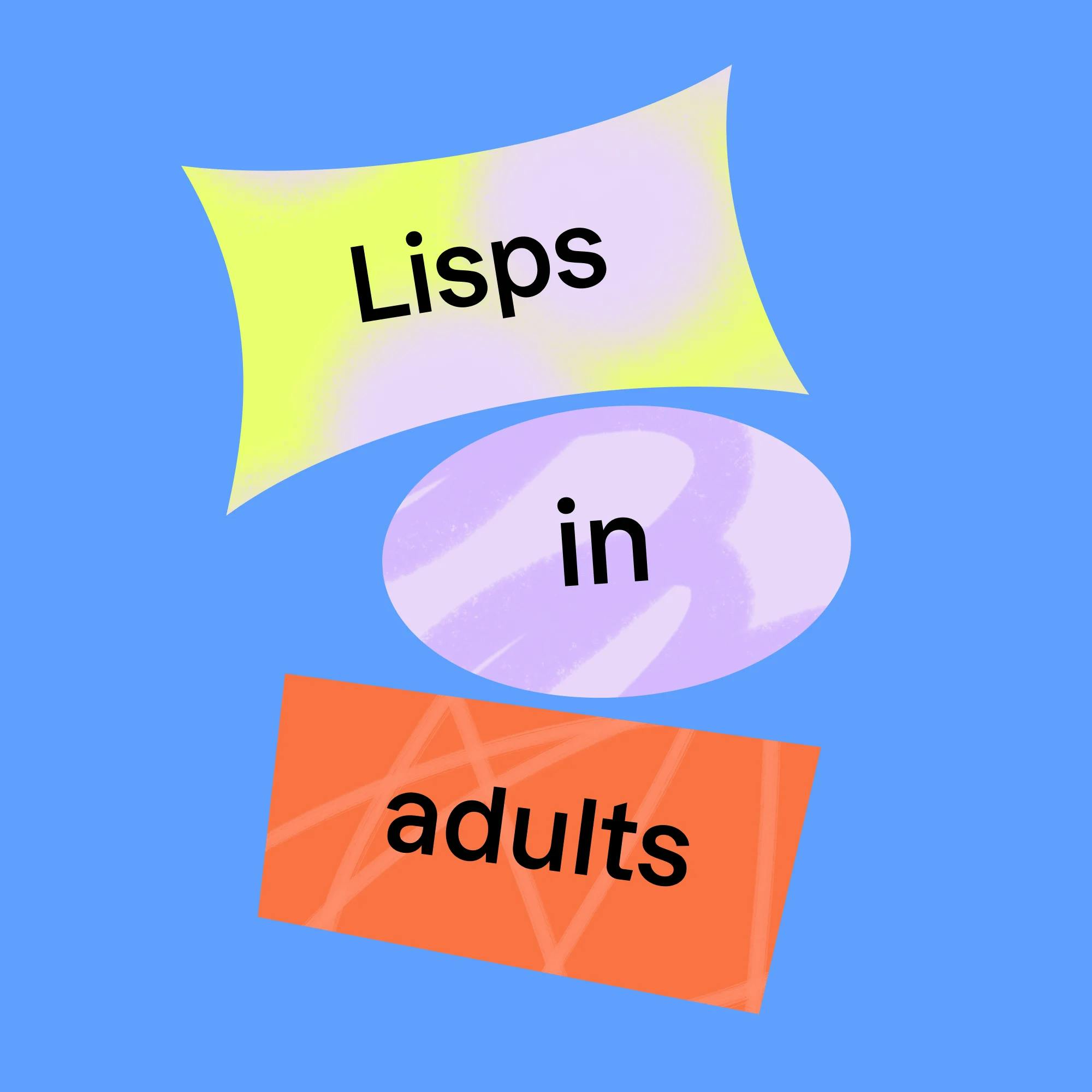Speech therapists often get questions about “fixing” a lisp, or the best way to get rid of a lisp.
You might wonder if you can correct a lisp on your own. But the answer to this question isn’t a straightforward one. There are many factors that influence a person’s speech, and speech therapists are uniquely trained to identify and treat articulation disorders like a lisp. Without the guidance of a speech therapist, a lisp can actually become worse.
Let’s take a look at what causes a lisp and what you can do if you’d like to change the way you speak.


What causes a lisp?
A lisp is an incorrect production of the /s/ and /z/ sounds. A lisp is caused by an incorrect motor pattern of tongue positioning and movement.
When a person has a lisp, they’re positioning their tongue in a way that blocks the airflow needed to make the /s/ and /z/ sounds. That distorted airflow creates the lisping sound.
Appropriate articulation is important because it helps people communicate clearly. Plus, /s/ and /z/ are sounds that occur often in the English language. Lisps can make people feel self-conscious and cause challenges in their social and professional lives.
Can a lisp be corrected?
Here’s the good news–a lisp can be corrected at any age, even as an adult! With the right speech therapy, many people see a major improvement in their ability to speak clearly. A speech therapist will evaluate and determine:
If a lisp is present
The possible causes or underlying factors, such as a tongue thrust, hearing loss, or structural changes in the mouth
Your personal goals for your speech
With this information, a speech therapist can create an individualized treatment plan to help you overcome speech challenges, identify and fix sounds you’re producing incorrectly, and achieve your goals. They should also give you customized activities you can practice at home between sessions to boost your progress.


What is the best way to get rid of a lisp?
The best way to “fix” a lisp is by working with a licensed speech therapist. In speech therapy, you will learn to say the /s/ sound correctly at various levels, in a specific order, so you can achieve success.
You may start by saying the sound on its own, then work your way up to saying it in words and then sentences. As you show readiness, the speech therapist will guide you to practice at more complex levels, using their clinical judgment to help you make the quickest progress.
Learning how the mouth moves to make sounds is a foundational skill needed to accurately produce speech sounds.
Learning how the mouth moves to make sounds is a foundational skill needed to accurately produce speech sounds. Your speech therapist will likely teach correct tongue placement first, both in resting position and for speech. Normal resting posture for the tongue looks like this:
The tongue is slightly suctioned to the roof of the mouth, with the tip of the tongue resting on the alveolar ridge (not on the back of the teeth).
The jaw should be relaxed, and the lips should be closed.
Breathing should happen through the nose.
You will also learn how to position your tongue muscles to produce a clear /s/ and /z/ sound. Your speech therapist will have a variety of techniques they use to teach this.
To make the /s/ sound, the tongue tip should barely touch the bumpy part behind the top front teeth. The sides of the tongue should be raised enough to touch the insides of the top back molars. The air is directed only out of the front of the mouth. The voice is off, meaning the vocal cords do not vibrate, resulting in a quiet sound.
Speech therapy practice will be repetitive to help you learn the correct “motor pattern” for accurately saying the /s/ and /z/ sounds.
Expert speech support for adults
If you'd like to improve your speech skills, we're here for you. Get matched with a licensed speech therapist today.
 Get started
Get startedCan you train yourself out of a lisp?
A big part of successful speech therapy is practicing at home, between sessions. But it’s important that you practice in the right way, under the guidance of a speech therapist. Practicing a sound incorrectly, at a higher level than you’re ready for, can cause you to form an incorrect motor pattern. You would then need to “unlearn” that motor pattern in order to say the sound correctly.
It’s important to practice correctly to avoid worsening the lisp or causing new problems.
It may seem tempting to try fixing a lisp on your own, especially with so many resources and videos available online. But it’s important to practice correctly to avoid worsening the lisp or causing new problems. Having a speech therapist monitoring this process is your best bet!


Do you really need speech therapy for a lisp?
Most adults are conscious of their speech and how they communicate. However, the impact of speech on a person’s social life and career is unique to that person. Lisping is not necessarily a negative! In fact, some adults celebrate their lisp. Seeking speech therapy for a lisp must be something that a person is truly motivated to do. If you don’t want to change your speech, you don’t need speech therapy.
At Expressable, client education is a big part of speech therapy. Our goal is to empower you in order to support your individual needs. Your speech therapist is your partner, helping you work toward goals that are meaningful to you. If you feel motivated to learn strategies to correct your lisp, then speech therapy is for you!
So, to answer the original question: A lisp is not always something that needs to be “fixed.” If a person wants to get rid of a lisp, the best way to do it is to work with a speech therapist. They’ll develop a treatment plan tailored to your needs to help you achieve your goals.
How Expressable Can Help
Concerned your child isn't reaching age-expected milestones? Looking for communication support from a professional? Expressable is a national online speech therapy practice serving children and adults. We treat all major areas of communication and feeding, offer flexible hours including evenings and weekends, and accept most major health insurance plans. We’re proud to have earned more than 3,000 5-star reviews from our clients (4.9/5 average).
Our therapy model is centered on parent and caregiver involvement. Research proves that empowering caregivers to participate in their loved one’s therapy leads to better outcomes. That’s why we combine live, 1-on-1 speech therapy with personalized education and home practice activities for faster progress.
Communication is more than words. It’s how we share how we feel and show who we are. We’re here to help you or your child do just that.

 Alexis Irazoque, M.S., CCC-SLP
Alexis Irazoque, M.S., CCC-SLP











